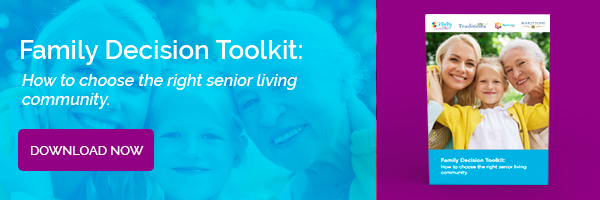Being a family caregiver can be one of life’s most rewarding experiences, offering a chance to reconnect with siblings and show gratitude to parents. However, caring for our parents can bring unique challenges that can strain even close family relationships.
As the holiday season approaches and families spend more time together, understanding how to navigate caregiving dynamics becomes even more important. At Vitality Living, we understand that caring for a loved one is more than just meeting their physical needs. If you’re experiencing tension with your siblings while caring for an aging parent in your home, these strategies can help your family work together more effectively and peacefully.
Why Sibling Conflicts Arise During Caregiving
As a senior caregiver, you might find yourself dealing with unresolved childhood rivalries, disagreements about a parent’s needs, or frustration over unbalanced responsibilities.
The stress of witnessing a parent’s health struggles, combined with busy careers and families of your own, can intensify tensions. Common sources of conflict include disagreements about care decisions, financial concerns, geographical distance, and differences in views of what your parents’ actual needs consist of.
Start with an Honest Assessment
Before emotions run high, create an objective list of your parents or loved ones’ care needs. Ask yourself these questions about whether your parent or loved one needs extra support:
- What personal care tasks are they struggling with?
- Are they having difficulty with meal preparation?
- Do they have trouble remembering to take medications or pay bills?
- Is the home relatively clean and clear of clutter?
Make sure to include your parents or loved ones in this conversation. Their input is an essential part of keeping them safe and respecting their wishes.
Not everyone in the family may agree on the level of assistance a parent needs. Consider consulting primary care physicians or arranging for a professional care assessment to provide an objective perspective that all siblings can reference.
Schedule Regular Family Meetings
Open communication is helpful in successfully caring for a loved one. Schedule regular family meetings, either in person or via video calls, to discuss a parent or loved one’s needs, review upcoming appointments, and address concerns before they escalate.
Every sibling should have a chance to voice their thoughts and feelings during these meetings. Understand each person’s comfort level and capabilities to help distribute responsibilities more fairly.
Divide Responsibilities According to Strengths
When caring for your parents or loved ones, recognize that not all siblings can contribute in the same ways. Geographic distance, work schedules, financial constraints, and personal circumstances all play a role in what each person can offer.
Create a shared list of tasks and divide them based on each sibling’s strengths and availability. Siblings who live far away can research home care services, arrange meals for delivery, or cover the cost of housekeeping services.
Keep Communication Lines Open
Prevent minor misunderstandings from becoming major conflicts by maintaining consistent communication. Phone and video calls work best for sensitive conversations, since they reduce the risk of misinterpreting tone in texts or emails.
Don’t place the entire responsibility of updating everyone on the primary family caregiver. Establish a shared system (like a group chat, email thread, or caregiving app) where all siblings can access updates about medical appointments, medication changes, and daily routines.
Plan Ahead for Changing Needs
Although you and your siblings may be managing now, there could be a time when caring for an aging parent in your home or independently becomes unsafe. Begin planning for this possibility while your parents can still express their wishes about future care.
Work together to create a list of resources, including in-home care providers and senior living communities near your parents. Preparing in advance ensures you have a backup care plan if the primary senior caregiver faces their own health crisis or emergency.
Vitality Living offers vibrant senior living communities throughout the Southeast designed to support successful aging. Learn more about our Vivid Life Program or find a community near you to schedule a tour.
When to Seek Outside Help
If your family continues struggling to work together peacefully, don’t hesitate to seek professional assistance. A geriatric care manager can help provide ongoing coordination or guidance, while an elder care mediator can help resolve conflicts and facilitate productive conversations between siblings.
These professionals bring objectivity to emotionally charged situations and can help identify solutions to prioritize your parents’ well-being.
Finding Balance in Family Caregiving
Caring for a loved one alongside your siblings can strengthen family bonds when everyone commits to open communication, mutual respect, and flexibility. You are all working toward the same goal of ensuring your parents’ safety, comfort, and quality of life.
At Vitality Living, we’re here to meet you at whichever stage of the journey you are in. Whether you’re exploring options for the future or need support now, our team is ready to help you find the right solution for your family. Contact us today to learn more about our communities and how we can support you.



